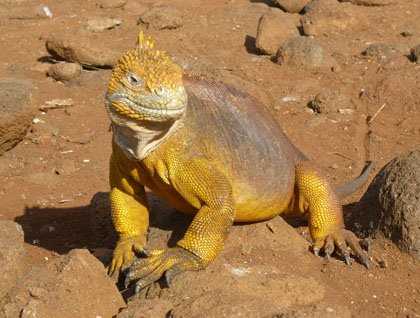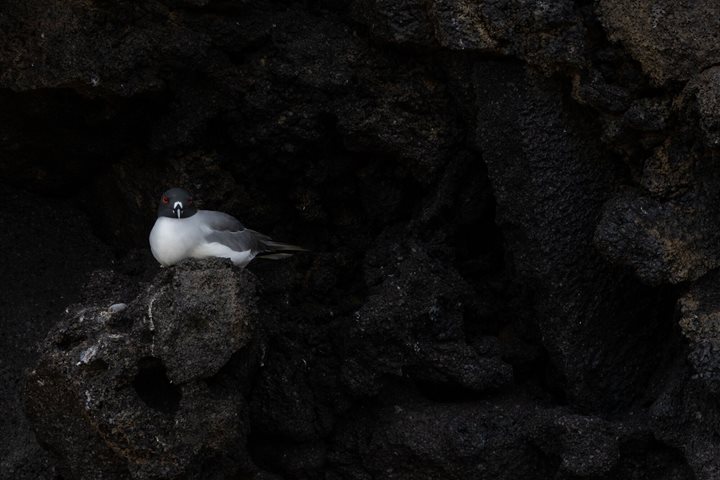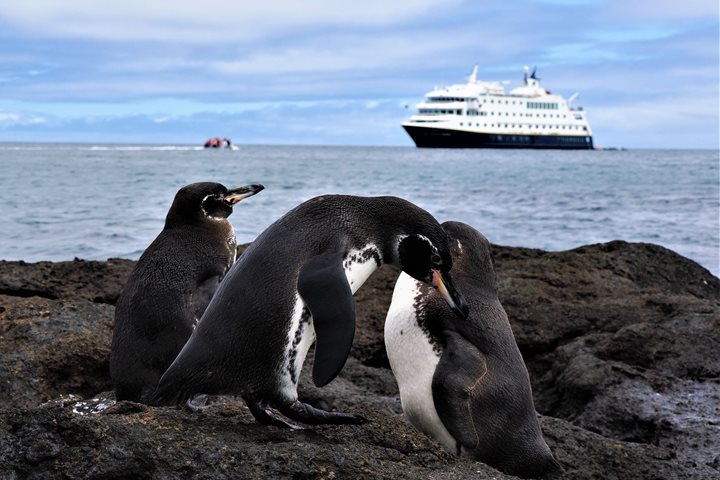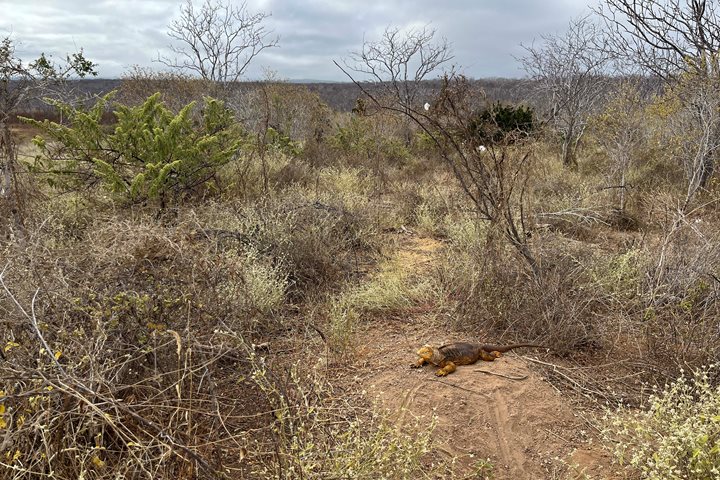As we approached North Seymour this morning, we could see frigatebirds gliding along the coastline, including a couple of immature male frigates with a partially inflated red pouch, followed by juveniles and females. After landing, we spotted a couple of swallow-tailed gulls that have begun to nest here. As we continued our hike, lands iguanas came across the path every 3 feet—it was amazing to see how the males where strutting in front of the females, who would not even turn to look at them!
Some juvenile blue-footed boobies kept looking at us from the taller rocks, as if they could not decide what to do next… it seemed like they didn’t really feel like flying yet, but we know that at this particular stage, they are now responsible for feeding by themselves. We can tell because they have already rinsed their feet in the ocean, whereas normally the feet of young birds are covered with excrement. More land iguanas waited in the shade of the opuntia cacti, likely hoping that the fruits of the pads will fall on top of them. The cacti here are the only source of water, and they also provide valuable shade. One iguana walked right in front of us and decided to rest under the cactus next to the trail, which is an excellent place to rest as the day becomes hotter. At a distance, we spotted a male frigatebird with its red pouch inflated, trying to impress one of the passing females. Next to this male we could distinguish other males, all of them making different sounds and calling for attention as the females flew above.
Snorkeling in Rabida Island in the afternoon gave us a chance to explore the underwater world in the Galapagos. We encountered lots of tropical fish, sea turtles, and a beautiful manta ray that got away from us just as we jumped into the water.
As we returned to our ship at the end of this exciting day, we were awarded a lovely view of sunset across the red island. It was just a perfect end the day in this interesting place.









